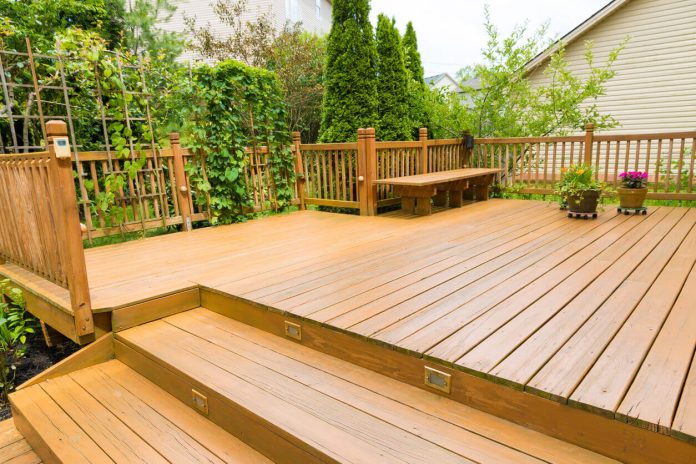When bad weather comes will your deck be ready?
With the arrival of cooler weather in the fall, many homeowners begin preparing the surroundings of their homes for the cold winter months – planting bulbs, mulching, trimming and genaeral yard maintenance. Your deck should be on the list, too. But how about you make future preparations for it instead of rushing to prepare your deck for just the cool weather when it comes?
What about other extreme weather conditions?
When you do this, you are not just preparing your deck for the now but for the future also. It will last long no matter the weather condition that meets it.
Cold weather (rain or winter ) future deck preparation is equally important, especially if it’s made of natural wood or you’re in an area where winters are particularly harsh. It will prolong your deck’s lifespan and save you time, effort and money in the long run. This is because the professionals in charge of deck installations would probably charge higher during the cold season and your bank account would not have to experience that because you planned.
It’ll also give you a head start on enjoying your deck in the spring and summer.
Planning ahead is always the best course of action.
Now that we’ve established the importance of preparing your deck for extreme weather conditions, how do you go about it?
Let’s find out.
Steps to Future-Proofing Your Deck for Extreme Weather Conditions
Initial Design
The design of your deck is the most important step for ensuring it can be enjoyed for many years no matter the weather condition. This is the first stage of any decking project – it helps to understand the requirements of the space, which will assist in making decisions affecting the later stages such as the type of materials to use and configurations.
During this stage, you need to think about what the deck will be exposed to throughout its life. Factors such as high footfall and continuous exposure to more extreme elements such as heavy downpours, strong hot and cold spells, strong winds and storms, will shape the requirements of the deck itself.
The Timber or Composite Question
Having a prior plan of the kind of design you want for your deck can help answer the timber or composite question, as it will give you some ideas about what your deck should look like and what is required of it.
For example, if your outdoor space demands curved edges, the composite could be the best option, or if it’ll be a small deck with a low budget, then you can think of going for timber.
While some people prefer the old and musty vibe that timber brings as well as its low price, composite decking board is a better option because it is known for its long-lasting ability. Besides, I’m sure you’d want your money’s worth. At the end of the day, whichever material you decide to use, quality is key and it’s important to always buy decking boards from trusted manufacturers and suppliers.
Preparation, preparation, preparation
Once you’ve decided on the design and materials to use, the next step for ensuring a long-lasting deck that can weather any storm is preparation. Take your time to plan the installation before actually starting. This will save you problems in the future and can be just the thing that will make all the difference when the stormy weather comes.
Make sure you read any product installation guide ahead of time so that you know what you’ll need and another thing you should consider before installing your deck. Check if you have all the materials and tools you need and if you are using composite decking, check out the features that will suit your yard. Remember to also clear any weeds and ensure the surface is level before beginning to build your deck.
Below the surface of the deck
The support/framework is the foundation of the deck and is what will ensure that the deck will last long and be strong enough to withstand bad weather conditions. So correct installation is a must. Also, make sure you follow the manufacturer’s guides for installation, as this will help you take note of important elements such as layouts and spacing between boards.
Drainage is another thing to consider for the undersurface of your deck. This is one thing that is often overlooked – even in the UK, where there is a wetter climate. Deck drainage systems consist of a series of troughs that drain water away from the deck. This keeps the area dry and helps protect it against the weather, ultimately keeping the deck in good condition for long.
The finishing touches
Just as carefully preparing to build your deck is important, beautifying it with finishing touches such as lighting and railings is very useful and satisfying. It is a very good way of making your outdoor space look timeless even though your aim was to protect it from bad weather conditions.
Think of it as using a stone to kill two birds. You get a beautiful yard with a sturdy deck that can withstand any weather condition. Also, you can add plants and built-in planters as a little way to spice up your choice of design. These things have a way of bringing your yard to life and you don’t have to worry about it going out of trend.
Conclusion
However your deck is designed, following these steps will help you enjoy it longer, and you will have a good return on your investment of building yourself a deck because no matter the harsh weather conditions, you will still have a deck and a front yard to back to.




































